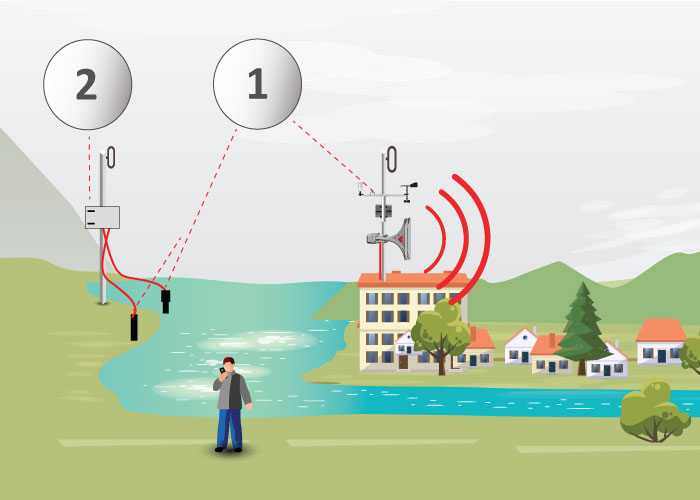What if you woke up to find that your neighborhood was flooded and water was getting into your house? For communities to be aware of possible flood risks and take the necessary steps to protect themselves and minimize damage, flood warning networks are very important.
In fact, understanding how these networks operate and how to interpret their warnings can be instrumental in protecting lives and property during flood events. This article will delve into the world of flood warning networks and discuss what you need to know about how they function.
Types of Flood Warning Network
Road Flood Warning System
A road flood warning system is designed to alert people about potential flooding on roads. This system typically uses sensors placed along roadsides in areas prone to flooding. These sensors detect rising water levels and send signals to a central monitoring system.
When the water reaches a certain level, the system triggers warnings, notifying authorities and the public. Roadside signs or electronic message boards may convey messages to drivers, advising them of flooded areas and encouraging alternate routes.
River Flood Warning System
A river flood warning system monitors and alerts people about potential flooding along rivers. This system employs various tools, such as river gauges and weather forecasts, to assess the riverbanks’ overflow risk.
For instance, river gauges measure water levels, and when these levels rise to a concerning point, the system issues warnings. The alerts can be disseminated through various means, including sirens, text messages, or emergency broadcasts.
River flood warning systems are vital for residents, businesses, and emergency responders to prepare for and respond to potential flooding events.
Benefits of Flood Warning Network
Alarm is Accurate
The benefits of a Flood Warning Network include the accuracy of its alarm system. This network uses advanced technology, such as sensors and monitoring devices, to precisely detect changes in water levels.
When there’s a potential flood risk, the alarm system is accurately triggered, providing timely and reliable warnings. This precision is crucial for ensuring that people receive alerts when they are at risk, allowing for swift and appropriate responses to potential flooding events.
Long-Term Monitoring
These systems continuously track environmental conditions, river levels, and weather patterns over extended periods. This continuous monitoring allows authorities to observe trends, identify patterns, and assess the risk of flooding over time.
Long-term data collection helps understand the dynamics of flood-prone areas, enabling better planning and preparation for future events. Monitoring conditions consistently enhances the effectiveness of flood prevention and response strategies.
Storage Function
Flood Warning Networks often come equipped with a storage function, allowing for accumulating and retaining historical data. This storage capability is valuable for analyzing past flooding events, understanding their causes, and refining flood risk assessments.
By storing data over time, authorities can develop more informed and proactive strategies for managing flood risks.
Enhance Community Safety through Effective Flood Warning Systems
As discussed in this guide, integrating advanced technologies, collaborative partnerships, and community engagement contributes to more resilient and responsive networks.
For cutting-edge solutions in flood warning systems, consider the expertise of Elpro. Elevate community safety through their innovative technologies, ensuring timely alerts and comprehensive flood preparedness.








